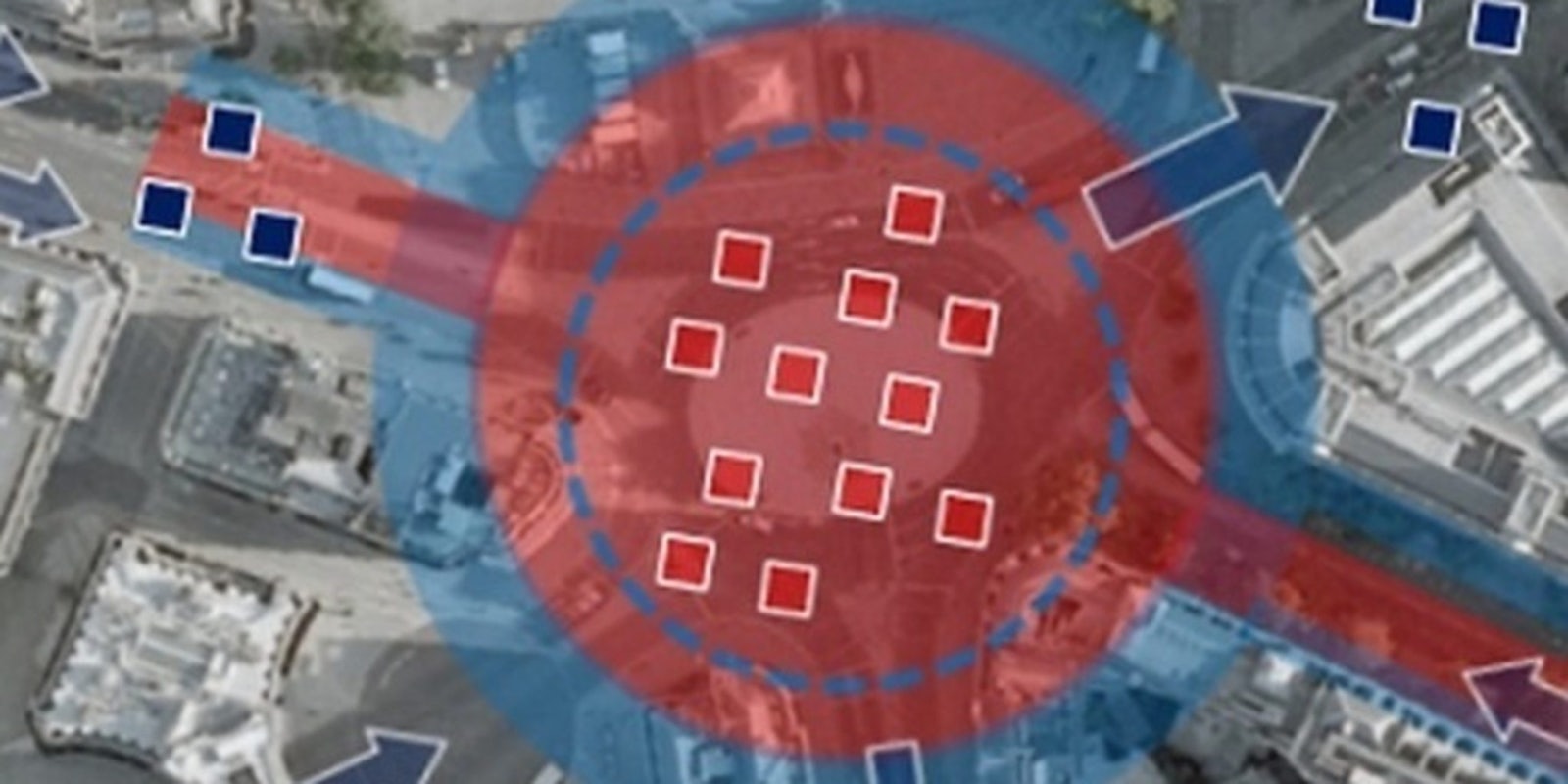The revolution may not be televised, but it will be Google-mapped with crowdsourced data from social media networks.
Modern-day digital cartography is transforming the ancient art of protest—with live tactical maps built by cyberactivists using Google Maps, Umaps, or the open-source world map open street map, and updated in real-time with tips from the ground sent via social media. The maps help activists avoid police; find shelter, medical help, food and other protest groups; and stay mobile to avoid arrest or violence.
This kind of maptivism was instrumental during the Arab Spring two years ago. Now, as Turks in Instanbul protest the authoritarian rule of Prime Minister Tayyip, live maps and social media are again playing a crucial role—enough to compel Tayyip to call Twitter “the worst menace to society.”
Savvy Turks created a Google map on June 1 to track police movement near Taksim Square. The Istanbul Polis Hareketleri map (Istanbul Police Movement) shows the location of the insurgent barricades used to guard protestors from police and vehicles, names of protesting groups, and information on whether roads are open or blocked. The green tent is the center of Taksim Square. The map was viewed more than 24,000 times in the two days after it was created.

Logically, protestors are encouraged not to include certain details on public maps, like the location of infirmaries or secret meeting spaces. For this kind of information, web-savvy activists create private maps only visible to other protestors.
Open Technology Institute field analyst Jonathan Baldwin helped Turkish activists build a version of the collaborative mobile mapping platform Tidepools in Istanbul, Ankara, and Izmir. The participatory map shows the location of tear-gassed areas, shelter, fire, medical help, food, internet, and wounded people. Users send SMS texts with their needs and information.

Read the full story by Meghan Neal on Motherboard.
